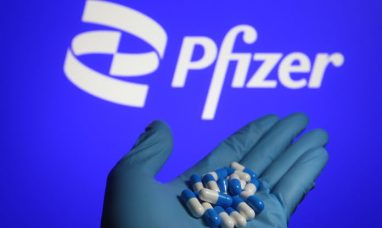Selective Insurance Group, Inc. (NASDAQ:SIGI) reported its second-quarter 2023 operating income of 99 cents per share, in line with the Consensus Estimate. However, the bottom line declined by 15% compared to the same period last year. The quarter showed positive trends in renewal pure price increases, exposure growth, stable retention, and strong new business. Despite these positives, the company faced challenges from higher catastrophe losses and escalating costs.
Total revenues for the quarter reached $1 billion, marking a 15.2% increase from the same period last year. The growth was driven by higher premiums earned, net investment income, and net premiums written, exceeding the Consensus Estimate by 0.8%.
Year-over-year, net premiums written (NPW) increased by 17% to $1 billion, primarily due to renewal pure price increases, exposure growth, stable retention, and strong new business. The company reported a total after-tax net investment income of $77.8 million, reflecting a 37% increase compared to last year. This growth was attributed to higher pre-tax investment income from the fixed-income securities portfolio, driven by higher book yields and increased investment of operating and investing cash flows over the past year, along with higher pre-tax alternative investment income.
However, after-tax net underwriting losses amounted to $1.2 million, compared to an underwriting income of $29.8 million in the same quarter last year. The company faced double the pre-tax catastrophe losses year-over-year, totaling $100 million. Additionally, non-catastrophe property loss and loss expenses reached $138.6 million, representing a 13.4% increase from the previous year.
Selective Insurance Group’s combined ratio deteriorated by 470 basis points on a year-over-year basis, reaching 100.2%, primarily due to higher catastrophe losses and lower prior-year favorable casualty reserve development.
Total expenses increased by 18.6% year over year, totaling $966.4 million. This increase was primarily driven by higher loss and loss expenses incurred, other insurance expenses, amortization of deferred policy acquisition costs, and corporate expenses. The figure surpassed our estimate of $882.9 million.
Segment-wise, Standard Commercial Lines’ NPW increased by 14% year over year to $870.1 million, driven by average renewal pure price increases of 6.7%, new business growth of 23%, and consistent retention of 85%. Standard Personal Lines’ NPW saw a significant rise of 32% year over year, reaching $109.1 million. Renewal pure price increases averaged 3.4%, retention stood at 88%, and new business growth contributed $19.0 million to the improvement. Excess & Surplus Lines’ NPW also saw a notable increase of 20% year over year, amounting to $105.7 million, driven by average renewal pure price increases of 7.5% and new business growth of 27%.
Financially, Selective Insurance ended the second quarter of 2023 with total assets of $11.2 billion, slightly lower by 4% compared to December 2022. Long-term debt remained flat at $503.6 million compared to the 2022 level. Debt-to-total capitalization improved by 70 basis points to 15.9% from the level at the end of 2022.
The company’s book value per share as of June 30, 2023, reached $40.81, reflecting a 2.8% year-over-year increase. Annualized non-GAAP operating return on equity for the second quarter of 2023 was 9.8%, representing a contraction of 160 basis points year over year.
Selective Insurance did not repurchase any shares during the first half of 2023 and had $84.2 million remaining under authorization as of June 30, 2023.
For the rest of 2023, SIGI estimates a GAAP combined ratio of 96.5%, including net catastrophe losses of 6 points, up from prior guidance of 4.5 points. The company expects after-tax net investment income of $300 million, which includes $30 million of after-tax net investment income from alternative investments. The overall effective tax rate is projected to be around 21%. The weighted average shares were 61 million on a fully diluted basis.
Featured Image: Freepik @ pch.vector









